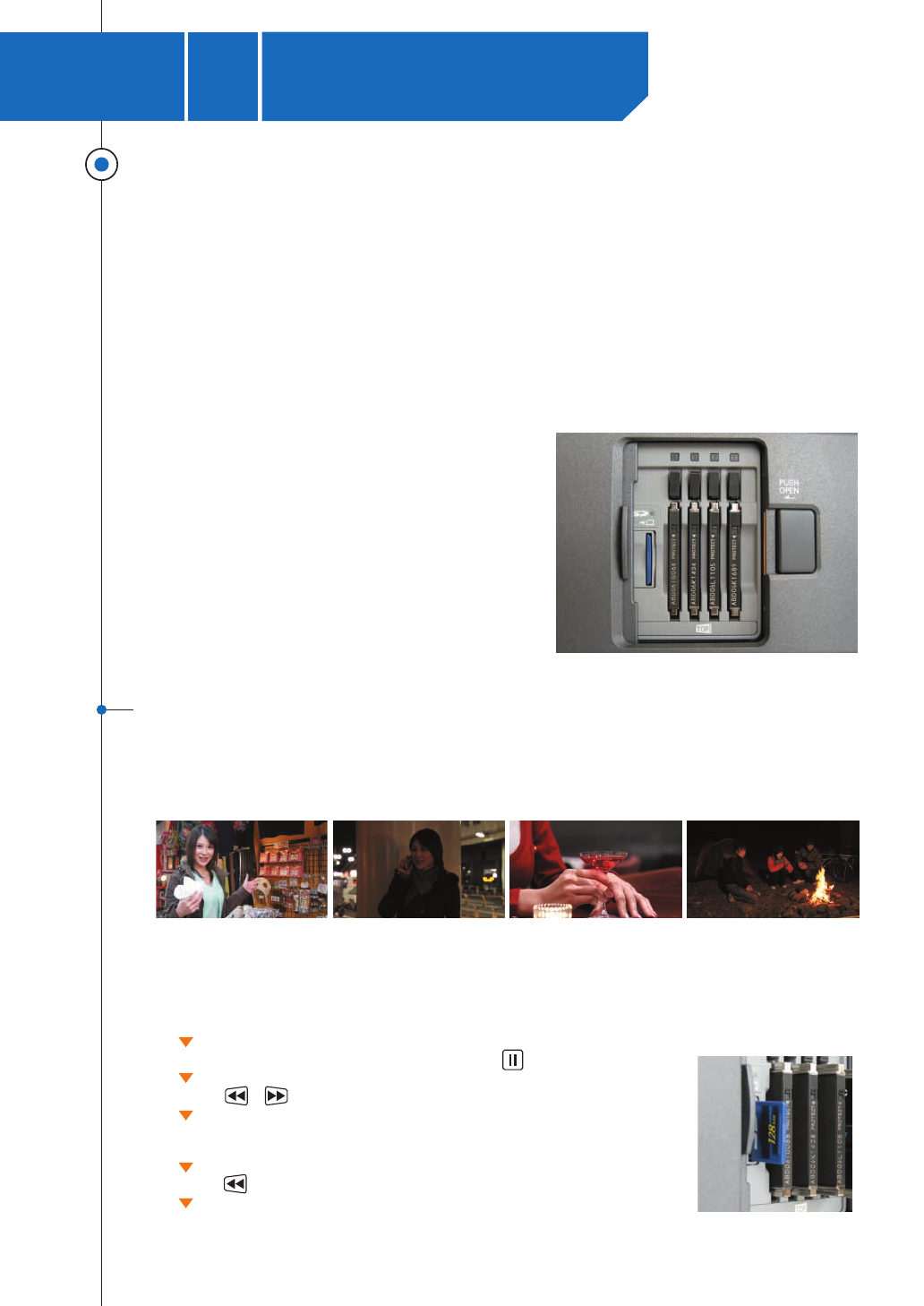
Copying To and Loading From SD Cards
CARD FUNCTION
Select SCENE FILE YES and confirm. (Press the OK (Still /Pause) button.)
Use the or button to select the file number to be saved.
Select WRITE and confirm. (*To load a file from the SD card, select READ.)
(* In this procedure you can also type in a file name.)
Use the button to display YES and confirm.
Press the MENU button 4 times to exit menu mode.
Hot Swap feature of the P2 system / When using 2 or more P2 cards
5
Hot Swap feature of the P2 system
Method of back up various data
P2HD
X
AG-HPX500
PRACTICAL GUIDEBOOK
11
Saving Scene Files and User Files
With the AG-HPX500, six presets are provided as Scene files and the camera features a dedicated Scene File
dial that lets you instantly recall the preset that best fits the shooting conditions. You can save and load up to 8 files
on an SD card, with each file containing a Scene file with accompanying settings.
(*Compared with a maximum of 4 files saved/loaded on the AG-HVX200.)
When recording on location, the Hot Swap feature is the greatest blessing of a P2 card system camera. With
tapes, other types of hard disks or Blu-Ray disks, replacing the media while the camera is operating or recording,
and continuing to capture, is of course impossible. With the P2 system, however, if one has at least 2 cards and a
PC, or a P2 data storage device such as P2 Store or P2 Gear, etc., it is possible to capture continually for a
longer period of time than the capacity of a single P2 card would allow.
The AG-HPX500 has four P2 card slots, thus it is possible to record for such extended periods of time as the
capacity of 4 cards allows (if using 16GB cards, up to 64GB.)
Note) About recording order of slots
When P2 cards are inserted in all 4 slots at once, data will generally be
stored on the cards in ascending order (1 -> 2 -> 3 -> 4). However,
phenomena in which the data is not stored in this order may occur? for
example, if one switches from standard recording to native recording (24pN,
25pN, 30pN).
Even though the TC (time code) is recorded at an absolute address, thus
when the data is loaded into a nonlinear editing system, etc., data files will
line up in the order in which they were shot, so there is no risk of trouble.


















